How do you make a cup of coffee at home?
Making coffee at home sounds wonderful, but you have to do some homework to make good coffee at home, such as learning about grinding and water injection. There are so many theories about fine coffee, and it's not the same as home-brewed cocoa.
But to be honest, there are a lot of details about coffee that can be traced scientifically and technologically, and some people do report that the home is not as good as the outside.
If you want to make the same coffee as a coffee shop (first you have to have a lot of money, then you have to spend a lot of money). Well, it doesn't cost a lot of money to lie to you above, but you need to know the basics of fine coffee first: for example, the difference between soaking and filtration; what is extraction, solubility and TDS, respectively? what is brewing ratio? what is extraction rate? (can you speak human language?)
At the same time, I will also fool you with several brewing techniques that can actually improve the taste of coffee, such as stirring, steaming, water injection and so on.
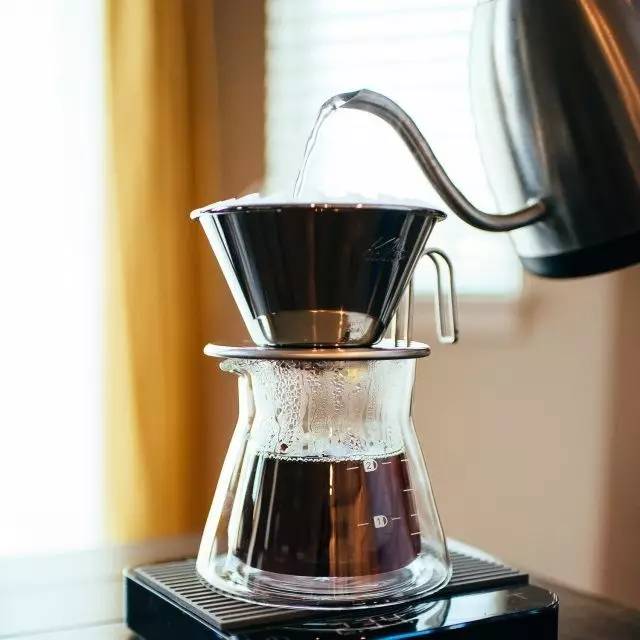
A perfect cup requires the perfect cooperation of multiple variables.
Extraction and solubility Extraction & Solubility
Scientifically speaking, coffee making is the process of extracting soluble substances from roasted and ground coffee. Hot water is used to make coffee, and brewing extracts a variety of compounds from the coffee itself.
These soluble compounds are the solubility we are going to discuss, and the coffee liquid that comes out generally contains the following soluble substances:
Caffeine (bitter)
Acids (sour or sweet, eg malic acid, citric acid, etc.)
Lipids or fats (viscosity)
Sugars (sweetness and viscosity)
Carbohydrates (bitterness and viscosity)
The solubility and extraction effect of these substances are limited by many factors, such as coffee variety, grinding degree, mineral content of water, roasting degree of coffee beans, brewing method and so on.
Sometimes specific cooking techniques only apply to a specific type of beans, but disobedient to another type of beans. This shows that the perfect extraction technique can be obtained by learning and experience. Baristas pretend to talk professionally about "how to rush" all day, but in fact, they also start with a fixed approach, and then adjust the variables to achieve the perfect flavor.
Let's talk about soaking and filtering:
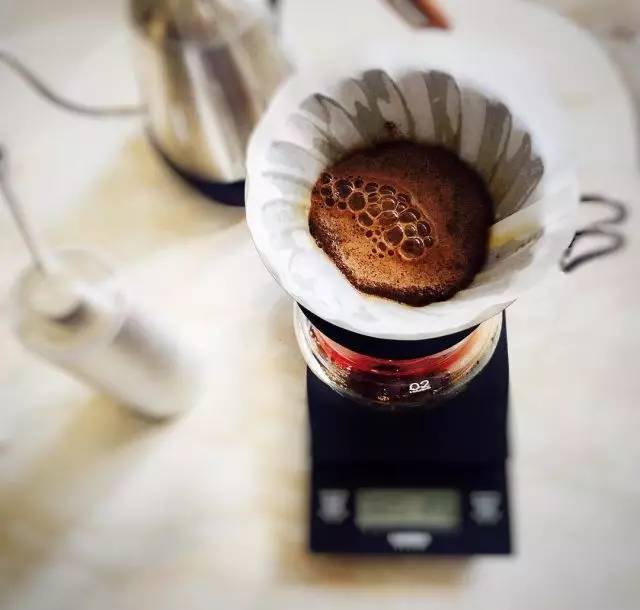
Find the taste you want by drinking more
Soak Immersion
Is to make the coffee powder completely immersed in water, which can extract coffee with the passage of time.
The most common soaking technique is the French kettle, as well as siphon, smart cup, love pressure, and the ultimate way to determine whether a bean is flirtatious or not-the cup test; most of the so-called low-temperature extraction, such as the legendary cold extract (and other random names such as ice extract and ice brew are all the same thing, are all soaked in cold water).
Soaking is a method that basically does not require manipulation, just add water and wait for 4 or 5 minutes.
The end of the immersion method needs to be filtered, the kettle has a metal filter mesh, the smart cup needs filter paper, and so on. No matter which filter is used, the ultimate goal is to separate the coffee liquid from the coffee grounds (if you use filter paper, it will also separate some of the grease in the coffee).
The speed of extraction will also decrease over time, as the substances in coffee gradually dissolve in water, forming a "saturated solution" of coffee. When the solvent is full of soluble substances, the ability of the solvent to dissolve the solute will gradually decrease.
What the above theory means is that you generally don't expect a cup of soaked coffee to be super silky like Dove chocolate. But there are some tips for making, which we'll discuss below.
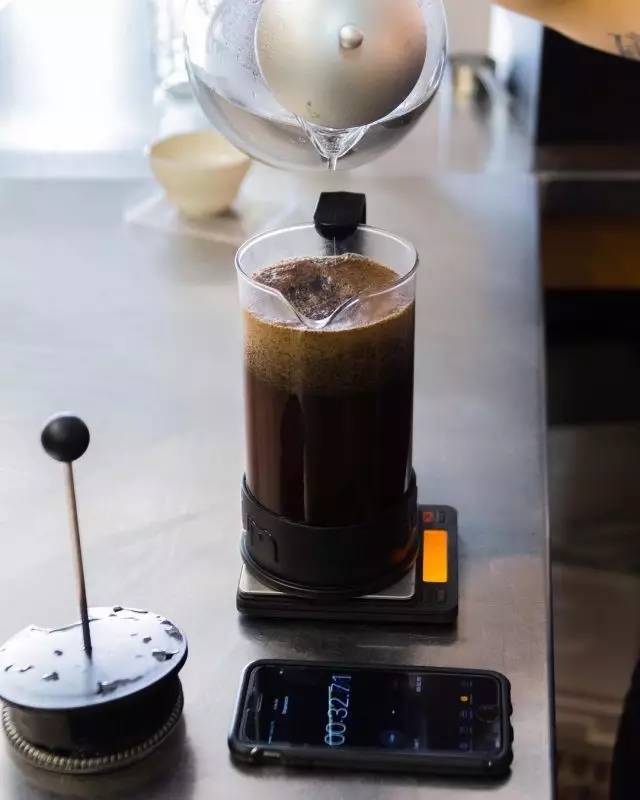
Generally speaking, hot water is used for soaking.
Filter Infusion
Filtration refers to a method of brewing in which water flows continuously through the coffee powder layer and the filter. Some commonly used filtering tools such as Hario V60 filter cup, Chemex, Kalita cake filter cup, etc., as well as some automatic American drip filter and so on.
Relatively speaking, the extraction effect of filtration is better than that of soaking, because it solves the problem of saturation in the soaking method, and there is a continuous supply of fresh water to extract, so that more soluble substances can be extracted. If the water keeps flowing, it can theoretically be assumed that all the soluble substances in coffee can be extracted.
However, filtering also has its own problems, and all the techniques are related to technology. For example, the water flow tends to pass through the gap with low resistance in the powder layer, causing some coffee powder to be not involved in the extraction process at all. In addition, if the coffee powder particles are ground too fine, it will hinder the flow of water. The result may lead to excessive extraction time or overflowing powder bowls, destroying coffee or soiling the work area.
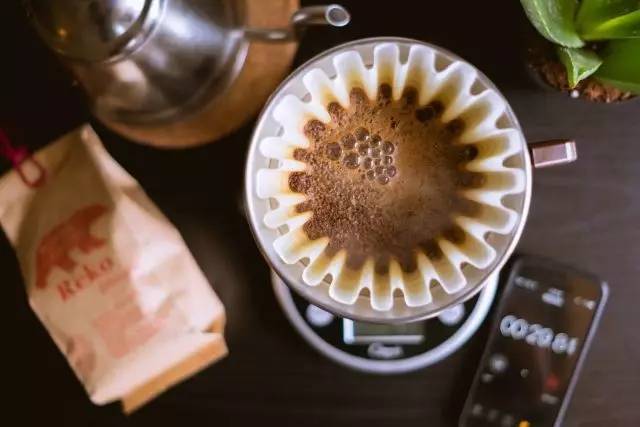
Kalita cake filter cup, one of the best filter cups in the world
Espresso Espresso
Technically, espresso belongs to filtered coffee, but due to some of its own characteristics, espresso is usually divided into another category. Because: espresso is extracted under pressure. Under the right conditions and equipment, any bean can be made into espresso.
The amount of espresso is usually small, ranging from 20-40ml, so it is much stronger than the average filtered coffee. Several factors for making espresso: fine grinding, pressurized water, extraction time of 20-30 seconds.
The final brewing ratio of espresso is also different from that of ordinary soaked or filtered coffee, so we can discuss the brewing ratio below.
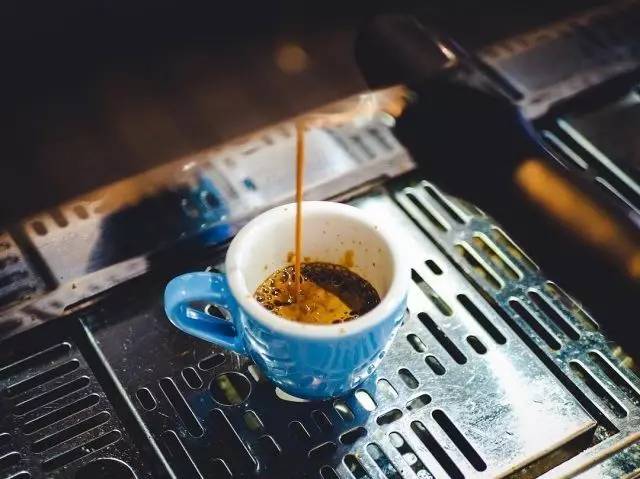
The right powder is better than the right taste
Cooking ratio Brew Ratio
The brewing ratio refers to the ratio of coffee powder to water used in brewing (also known as the ratio of powder to water in Chinese). If you want to play powder-to-water ratio at will, it is also ok.
Because the extraction of espresso is too efficient, the powder-to-water ratio is usually 1:2 (one powder is extracted with two parts of water).
If you want to strictly observe the powder-water ratio, you need to strictly measure the amount of powder and the amount of water. Because it allows you to quickly get the cooking routine. Use electronic scales, preferably waterproof and with an anti-scalding pad, will be the best partner for your own cooking. Note that the weight is measured, not the volume.
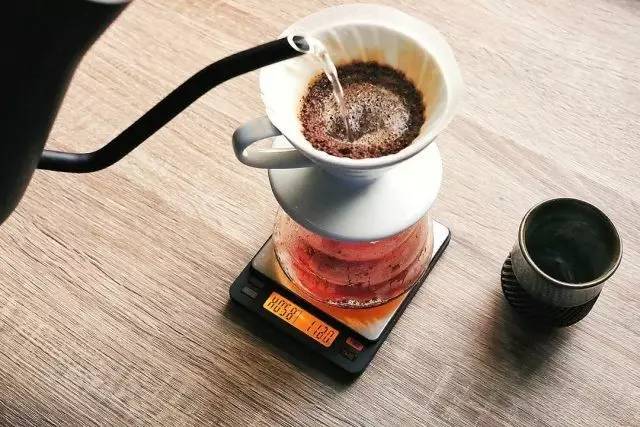
Use electronic scales to help you better control cooking
Refractometer and TDS
To measure the extraction rate, you can use an instrument called a refractometer (optical refractometer). The principle of this instrument is that compounds dissolved in water can refract light into the liquid. To put it simply, the more total dissolved solids (TDS), the more obvious the refraction; the more TDS, the more sufficient the extraction.
When people talk about the strength of a coffee, it actually means TDS--, whether they intend to or not. Coffee with a "strong" taste has a higher solubility. However, it has nothing to do with whether this cup of coffee is good or not.
Through TDS and the ratio of powder to water, you can already determine the extraction rate. The extraction rate intuitively tells us how much coffee is dissolved in the coffee solution, and also provides some ideas for perfect brewing.
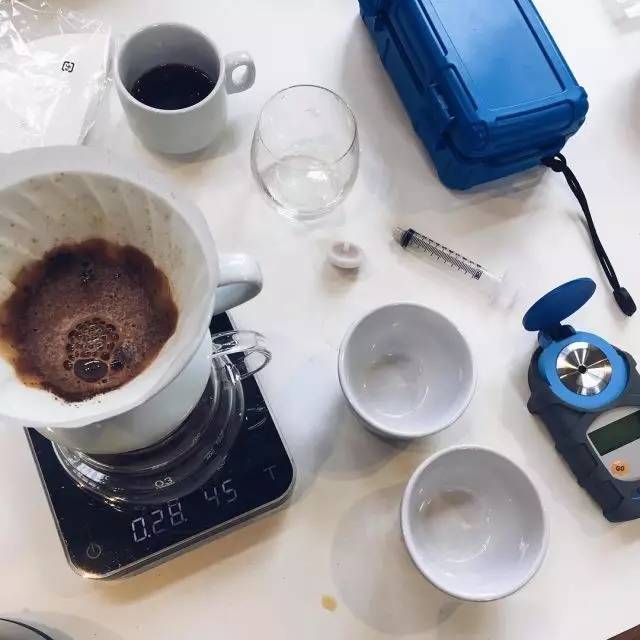
The refractometer can accurately tell the TDS level (in fact, there is a more direct thing in the world called the TDS pen)
Cooking adjustment
It has been mentioned above that the use of specific techniques or techniques can improve the flavor, so let's take a look at the actual ones:
Stir Agitation
Stirring, that is, stirring the powder layer, whether in soaking or filtration, can improve the extraction effect.
It is especially effective for soaking for two reasons: first, stirring can break up the powder layer that floats on the surface. Try pressing the kettle without stirring, you try? Second, do you still remember that soaking is easy to cause saturation and affect extraction? Stirring solves the problem to some extent.
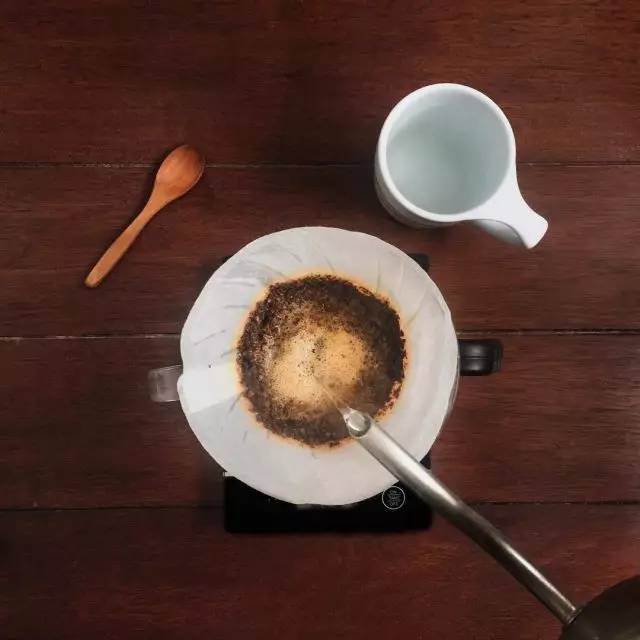
You can stir with a spoon.
Add water Bypassing
Adding water to the brewed coffee is the easiest way to adjust the concentration. If you like strong coffee but don't like the sticky taste, just add a small amount of water. The method of adding water after cooking does not change the ratio of powder to water and the extraction rate.
Of course, you can also make the water very strict, weigh the flow and monitor the TDS before and after to achieve the best results.
Cut-off Pluse
Water cut-off refers to more water injection during filtration and cooking instead of using a constant flow of water. Water cut-off can make the powder layer corresponding to each water injection to obtain a better extraction effect. The more times the water is cut off, the more it can improve the consistency and extraction effect of coffee.
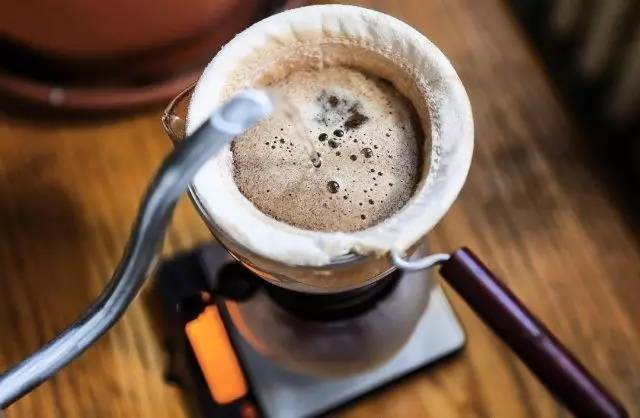
Water cut-off can improve the extraction rate.
Pre-soaking (pre-infusion, also known as steaming The Bloom)
Pre-soaking refers to wetting the coffee powder with a small amount of water, which is suitable for filtration and brewing. The general operation is to pre-soak for 30-60 seconds, and then formally brew.
In fact, it is a bit like cutting off water, for filtration and cooking, steaming can improve the overall extraction.
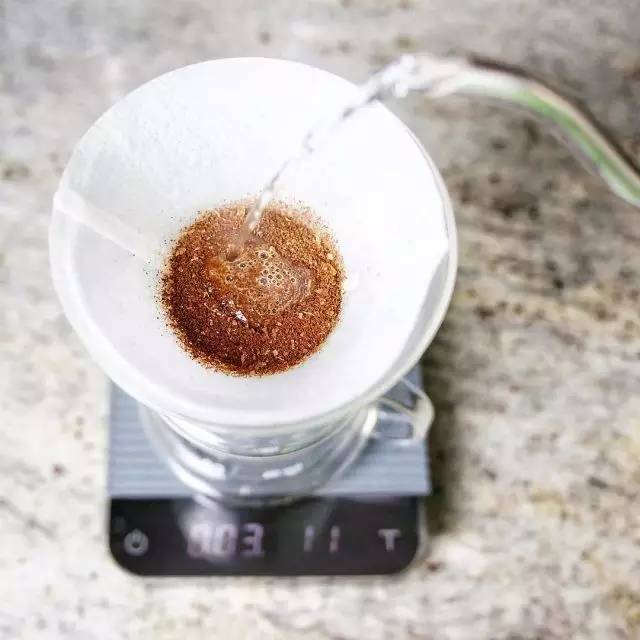
The fresher the beans, the bigger the steaming.
Making coffee can also be scientific-the better the coffee, the more technical support it needs. These terms may be really difficult to understand at first, but with more practice, you can quickly master them. Try using these concepts to know, and you will soon find that your coffee technology has improved by leaps and bounds.
Important Notice :
前街咖啡 FrontStreet Coffee has moved to new addredd:
FrontStreet Coffee Address: 315,Donghua East Road,GuangZhou
Tel:020 38364473
- Prev
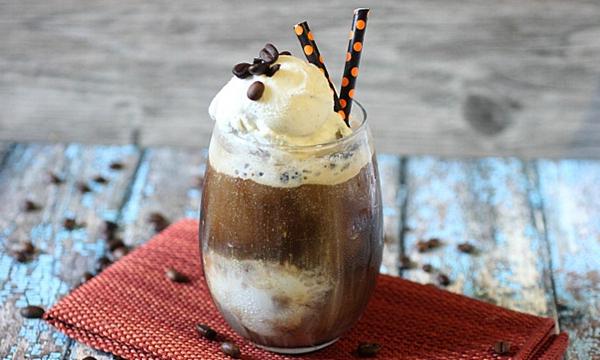
All kinds of fancy coffee from DIY Starbucks at home? All you need is a cold brew.
What is the best way to spend the summer with coffee lovers? Cold coffee, naturally. Cold brewed coffee tastes far better, smoother and less acidic than brewed hot coffee and chilled in the fridge. But better taste also means longer brewing time and more bean consumption. 2 cups cold brewed coffee, 1 1/2 cups into 1 cup (237ml) ground to medium coffee
- Next
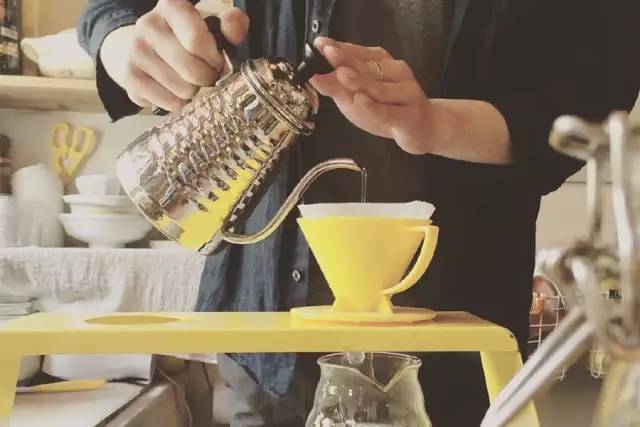
Three minutes to make a cup of coffee.
Pay close attention to the coffee comment (Weixin Official Accounts vdailycom ) and find that the beautiful coffee shop opens its own small shop. The United States also plays hand-brewed coffee. The American fine coffee system will pay special attention to water temperature, grinding degree, powder-water ratio, extraction rate and curve. On the basis of thoroughly understanding these data, the Japanese will throw away these crutches, clear their minds, and then pay more attention to the interpretation of the present.
Related
- What is the meaning of lactic acid fermentation with coffee bean treatment?
- How to judge the state of foam by sound?
- How does the latte pull out the unicorn pattern? Come to get for a little trick to improve the flower pull!
- Will flower pulling affect the taste of the latte?
- Do you know the history of coffee?
- The difference between honey treatment and sun washing what is raisin honey treatment?
- What kind of milk can a novice use to make coffee foam to keep the foam longer? The correct method and skills of milking tutorial sharing
- Why do washed coffee beans taste sour? Flavor characteristics of washed Coffee
- Introduction to the skill of how to practice the size and height of water injection around the circle of hand-brewed coffee
- How do beginners practice coffee flower drawing from scratch?

